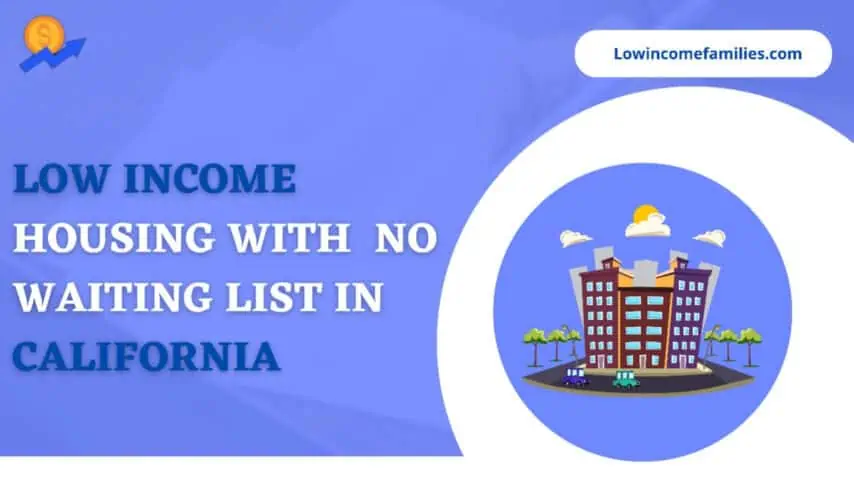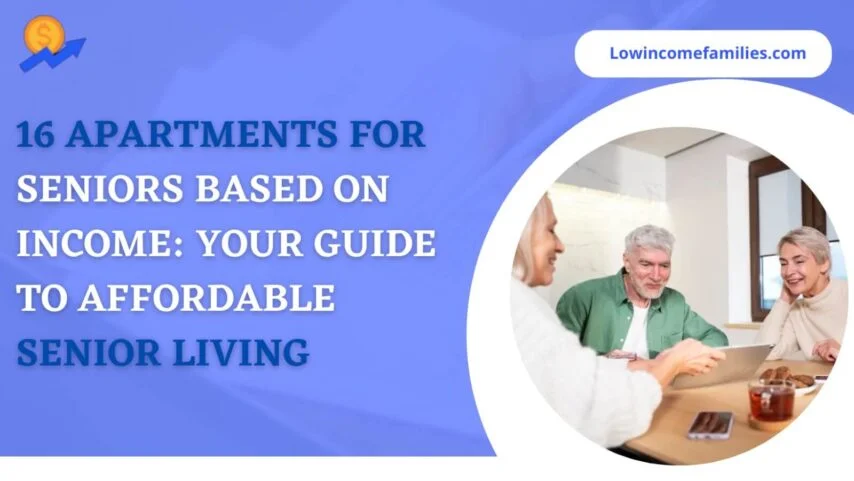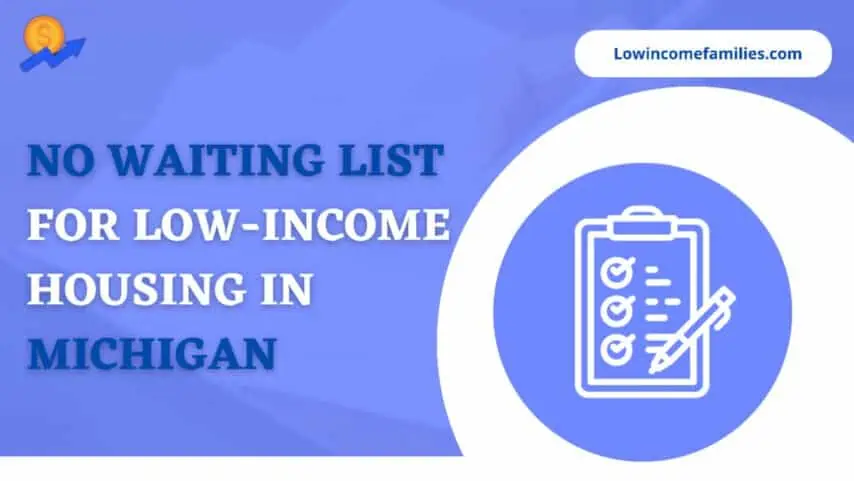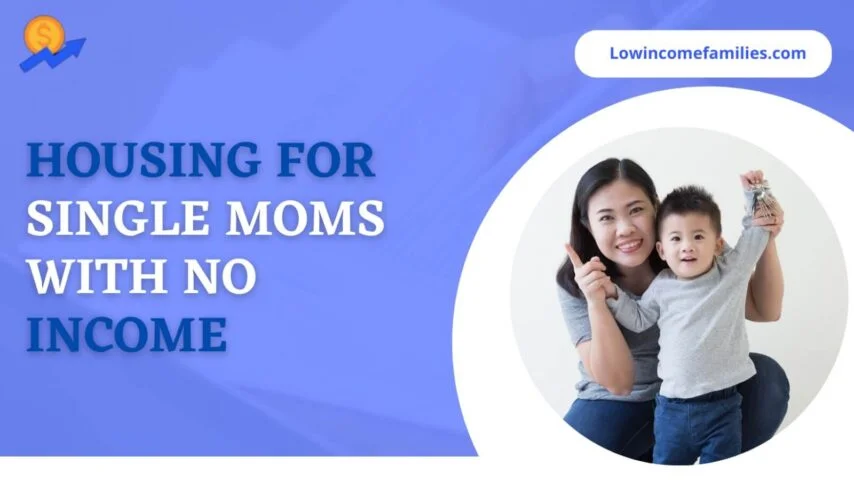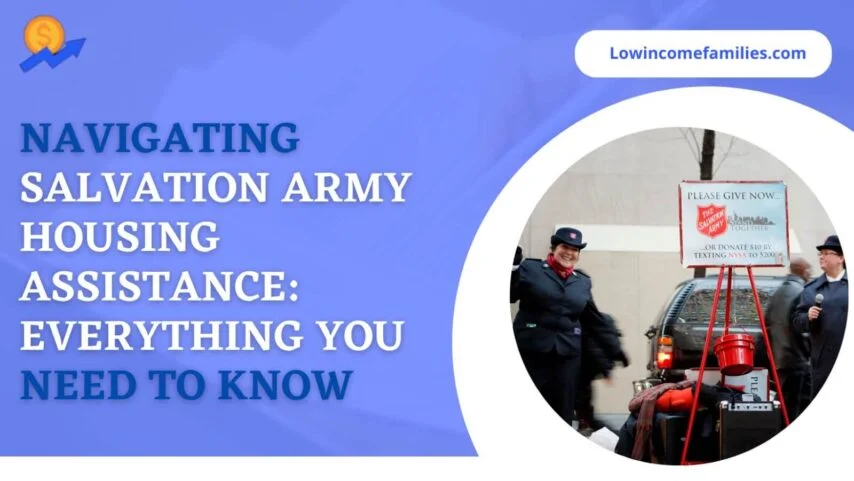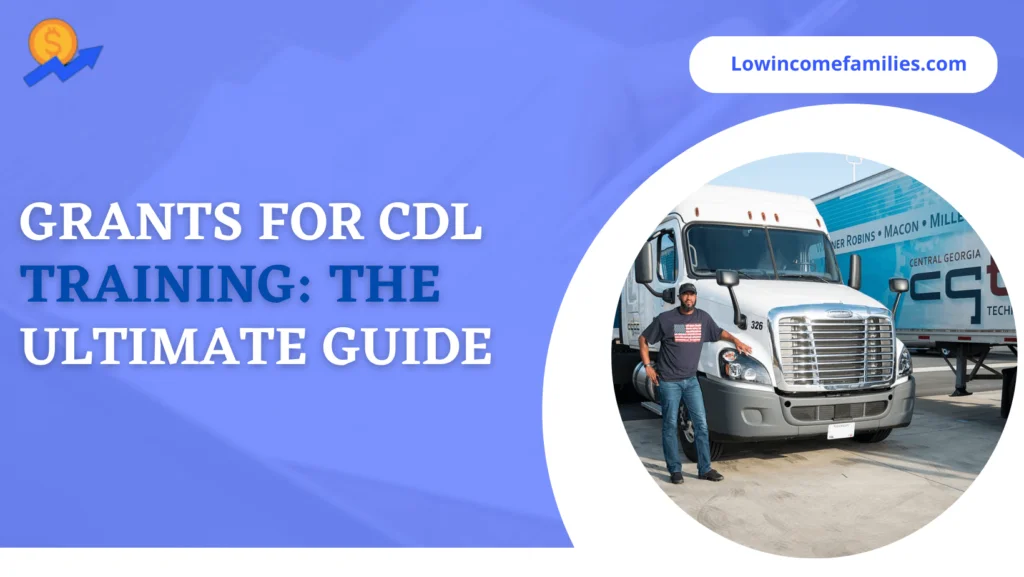Are you looking for a place to live in California but don’t have a lot of money? Don’t despair! There are many low-income housing with no waiting list California options available throughout the state, and some even come with no waiting list.
In this blog post, we’ll explore some of the low-income housing options in California that don’t require you to wait in line. We’ll look at the application process, the services offered, and more, so you can find the best fit for your needs. Keep reading to learn more!
Low Income Housing With No Waiting List In California
If you’re a California resident who is struggling to make ends meet, you may be considering low-income housing options. Fortunately, there are many programs available to provide affordable housing for those with limited resources.
In addition, some of these programs have no waiting list, so you can access housing quickly. When it comes to low-income housing in California, there are several types to choose from. Public Housing is one of the most common options and includes single-family homes, apartments, and condominiums.
Check Also: Apartments With No Application Fee Near Me
Rental assistance programs such as Section 8 vouchers also provide rental assistance for eligible tenants. Additionally, some communities offer supportive housing that provides more comprehensive services to help residents remain self-sufficient.
When looking for low-income housing in California, it’s important to consider how much rent you can afford. Most low-income housing programs use a maximum allowable rent based on your total household income. This amount is usually 30% or less of your total monthly gross income.
Keep in mind that some programs may require you to pay additional fees such as a security deposit or utilities. To qualify for low-income housing in California, you must meet certain eligibility requirements.
Generally, applicants must demonstrate financial need, have a history of being a good tenant, and have satisfactory references. Your household size and income will also be taken into account when determining your eligibility.
When applying for low-income housing in California, it’s important to know the application process. You’ll need to fill out an application form and provide supporting documents such as proof of income, tax returns, and other financial information.
Once your application is received and reviewed, you may be contacted for an interview or additional information. When applying for low-income housing in California, several tips can help ensure a successful application. Be sure to answer all questions truthfully and provide complete information.
Make sure all documents are legible and include supporting documents if needed. Lastly, be sure to submit your application before the deadline. Following these tips can help increase your chances of being accepted into a low-income housing program.
Check Also: Find low Income housing apartments with no waiting list
Affordable Housing In California
The availability of Affordable Housing in California is limited and there are many people in need. The state of California has programs and initiatives in place to help those who need it most. The California Department of Housing and Community Development (HCD) offers a range of housing programs and services that can assist low-income individuals and families.
These include the Low Income Housing Tax Credit (LIHTC), Section 811, HOME Investment Partnerships Program (HOME), Public Housing, and other initiatives that provide rental assistance, financing, subsidies, and other forms of housing support.
The Low Income Housing Tax Credit (LIHTC) program helps finance the construction or rehabilitation of affordable rental housing for low-income households. Through this program, developers can receive federal tax credits in exchange for creating or preserving affordable rental housing for people with incomes at or below 50% of their area median income.
The Section 811 program is designed to provide housing for low-income people with disabilities. It offers rental assistance to very low-income persons with disabilities so they can afford safe, decent, and affordable housing.
The HOME Investment Partnerships Program (HOME) provides grants to states and local governments to create and maintain affordable housing options for low-income households. This includes rental housing, homeownership opportunities, and support services such as job training and credit counseling.
Public Housing provides subsidized housing for very low-income individuals and families, the elderly, and people with disabilities. Rental assistance is provided directly from the local housing authority to eligible applicants.
Check Also: Luxury apartments that accept section 8 vouchers
These programs provide vital support to those in need of affordable housing in California, offering financial assistance and other resources to help them obtain safe, decent, and affordable housing. Check here for more details on affordable housing. Checkout the new listings if you live in California.
The California Department Of Housing And Community Development (HCD)
HCD administers several programs to assist lower-income Californians with securing affordable housing. The most notable of these programs is the CalHFA Homebuyer Assistance Program (CalHFA).
This program provides below-market interest rate mortgage loans and closing cost assistance to first-time home buyers. Additionally, HCD administers several rental assistance programs that help low-income households find affordable rental housing in California.
Read Also: Low Income Housing With No Waiting List In Michigan 2023
HCD also offers the Supportive Housing Program, which provides rental subsidies and supportive services to individuals and families who are homeless or at risk of homelessness.
Finally, HCD’s emergency shelter grants program assists local governments in providing temporary emergency shelters and related services to homeless persons.
Overall, HCD is a valuable resource for Californians looking for low-income housing options. If you need housing assistance, be sure to check out what HCD has to offer! For More Information you can visit the website.
Section 811 (Visit Website)
The program has three components:-
-
Housing Choice Voucher
This voucher program allows participants to live in any unit that meets their needs and preferences, as long as it meets the requirements of the program.
-
Project Rental Assistance Contract (PRAC)
This program provides project-based rental assistance to non-profit organizations or private owners of residential units to be used exclusively by persons with disabilities.
-
State Use Agreement (SUA)
This program works in conjunction with PRAC and allows state agencies to use units owned by non-profit organizations or private owners for persons with disabilities.
To qualify for Section 811 assistance, an individual must meet certain eligibility criteria. Generally speaking, applicants must be at least 18 years old, have a disability, and have an income at or below 50% of the Area Median Income (AMI). It is important to note that different states may have additional requirements for eligibility.
For more information about the Section 811 Program, please visit the U.S. Department of Housing and Urban Development’s website. Additionally, each state may have its specific requirements and guidelines for the Section 811 Program.
Check Also: Private landlords that accept evictions
HOME Investment Partnerships Program (HOME)
The HOME Investment Partnerships Program (HOME) is a federal housing program funded by the U.S. Department of Housing and Urban Development (HUD). This program helps local communities to build and renovate affordable housing for low-income families, individuals with disabilities, and elderly residents.
The HOME program provides funds for homebuyer assistance, acquisition, rehabilitation, new construction, tenant-based rental assistance, and non-housing community development activities such as public services and economic development.
The state allocates HOME funds to local governments, which then assist eligible applicants. Local governments may set their income limits for applicants, but all applicants must meet the HUD median income requirements to qualify for assistance.
In addition, all HOME-assisted units must be affordable for at least 30 years. The HOME program helps low-income families access safe and affordable housing, while also helping local governments create more vibrant and inclusive communities.
With the help of HOME funds, local governments can improve their neighborhoods by increasing the availability of quality housing and creating economic opportunities for residents.
Check Also: Houses for rent by owner that accept section 8
The Low Income Housing Tax Credit (LIHTC) Program
In California, the LIHTC program is administered by the Department of Housing and Community Development (HCD), and all projects must be certified by HCD before any credits are approved.
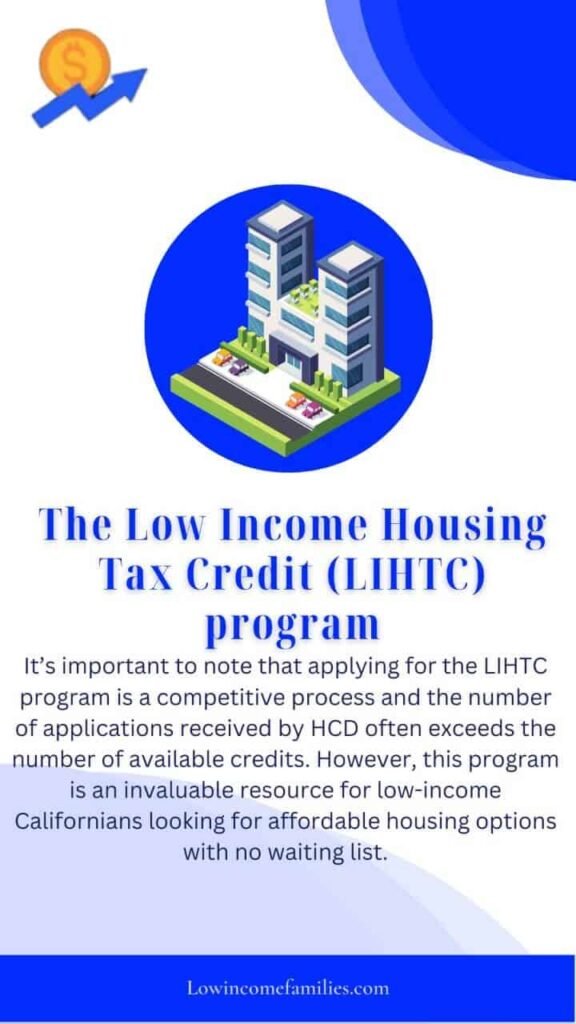
The program provides tax credits to encourage the development of affordable housing, while also providing states with additional resources to meet their specific housing needs.
HCD has set up a comprehensive system to make sure that the LIHTC program is administered fairly, transparently, and efficiently. Developers must submit detailed plans, budgets, and cost estimates for each project they propose, and then HCD will review these applications to determine if the proposed project meets eligibility requirements.
Once approved, developers must commit to maintaining the affordability of their housing units for at least 15 years. The amount of credits provided depends on several factors such as the number of units developed, their location, and the income level of tenants.
It’s important to note that applying for the LIHTC program is a competitive process and the number of applications received by HCD often exceeds the number of available credits. However, this program is an invaluable resource for low-income Californians looking for affordable housing options with no waiting list.
Tips For A Successful Application
Finding affordable housing in California can be challenging, but if you’re eligible for low-income housing, there are several options available with no waiting list.
To ensure a successful application, Here are some tips to keep in mind :-
-
Know Your Eligibility
Before applying for low-income housing, make sure you understand all the eligibility requirements. The most common criteria are income, age, and disability. Make sure to familiarize yourself with the specifics of each program you’re interested in before you apply.
-
Gather All Documentation
Most applications require extensive documentation such as proof of income, tax returns, birth certificates, Social Security cards, and more. Make sure to have all your documents ready before submitting your application.
-
Make Sure Your Application Is Complete
Before applying, double-check it for accuracy and completeness. Make sure all required information is filled out and that all documents are properly attached. If the application isn’t complete, it won’t be processed.
-
Follow Up
Once you submit your application, follow up with the landlord or organization that accepted it. Keep track of when it was submitted, who it was submitted to, and when you should hear back from them.
-
Have Patience
Low-income housing applications can take several weeks to process, so it’s important to be patient during this time. Keep in mind that most landlords receive multiple applications and only choose a few of them.
By following these tips, you can increase your chances of securing low-income housing with no waiting list in California. With the right preparation and diligence, you can find an affordable home for yourself or your family in no time.
Conclusion :-
For those in California struggling to afford their dream home, low-income housing is a great option. The California Department of Housing and Community Development (HCD), the HOME Investment Partnerships Program (HOME), the Low Income Housing Tax Credit (LIHTC) program, and Section 811 are just some of the available options with no waiting list.
It’s important to take the time to research the various programs and requirements to determine which is best suited to your individual needs. Additionally, preparing a successful application is key to ensuring a successful outcome.
With these steps in mind, you can be one step closer to finding affordable housing in California!
Frequently Asked Questions
How do I qualify for low-income housing in California?
To qualify for low-income housing in California, you must meet certain requirements. Your annual household income must be at or below the median income for the area you’re applying for and you must be able to document your income. You must also not have any criminal history, nor have been evicted from any rental property within the past five years.
How long is the waiting list for housing in California?
The waitlist for Section 8 housing in California is determined by the individual housing authorities and can vary greatly depending on the demand in the area. Generally speaking, it can take anywhere from a few months up to several years to get housing assistance in California.
What state has the shortest waiting list for Section 8?
Generally speaking, states with lower population densities tend to have shorter waiting lists for Section 8 housing assistance. Wyoming, North Dakota, Montana, and Alaska are some of the states with the shortest waiting list for Section 8 housing assistance.
What state is best for low-income?
It depends on what type of assistance you’re looking for. Generally speaking, states with lower population densities tend to offer more affordable housing options and other resources to those with low income. States like Wyoming, North Dakota, Montana, and Alaska are some of the best states for those living on low incomes.
How much does Section 8 pay in California?
The amount of money that Section 8 pays in California is determined by the individual housing authority in each region. Generally speaking, however, it is based on the household’s total income and the number of people living in the home. The voucher amount can range from 30% – 50% of the rent amount depending on the family’s income and other factors.
